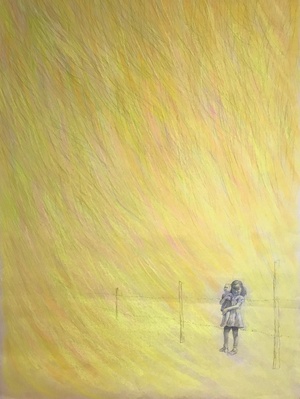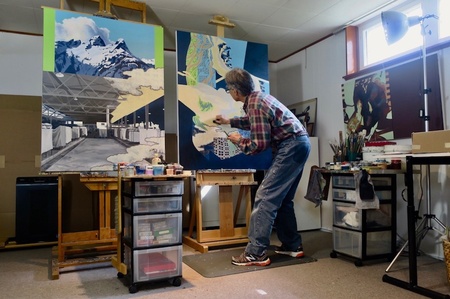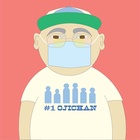How do worldwide issues of crisis like a World War or pandemic affect the way artists work?
While I am not aware of any Japanese Canadian artists who were active early in our settlement of Canada, one American Nisei sculptor Isamu Noguchi (1904-1988) born in Los Angeles, California, is certainly one of the best known sculptors anywhere. His father was the well-known poet, Yone, and his mother the educator-writer Leonie Gilmour (1873-1933) who edited much of Isamu’s writing. Although little is made of the times he was born into, Isamu lived through the Spanish Pandemic of 1918, World War One, the Great Depression and World War Two. Being a Nisei who was living in New York City protected him from being rounded up with the west coast Japanese Americans and put into an internment camp. His sister Ailes Gilmour (1912-1993) was a pioneer of the American Modern Dance movement and an original member of Martha Graham’s dance company. Isamu was her half brother.
Remarkably, as a biracial Japanese American and legal resident of New York, Isamu chose to enter Poston (Arizona) Internment camp as its only “volunteer internee” in May 1942. When there, he formed the “Nisei Writers and Artists for Democracy” group.
Noguchi first worked in a carpentry shop, but he’d hoped to design parks and recreational areas within the camp. Although he created several plans, among them designs for baseball fields, swimming pools, and a cemetery, he discovered that the War Relocation Authority had no intention of implementing them. Ironically, to the WRA camp administrators he was a troublesome interloper from the Bureau of Indian Affairs, and to the internees he was suspected to be an agent of the camp administration.
In June 1942, Noguchi applied for release, but intelligence officers labeled him as a "suspicious person" due to his involvement in "Nisei Writers and Artists for Democracy". He was finally granted a month-long furlough on November 12 and never returned. The Federal Bureau of Investigation, accused him of espionage and launched into a full investigation of Noguchi which ended only when the American Civil Liberties Union intervened. Noguchi later retold his wartime experiences in the 26-part British World War II TV documentary series The World at War (1974).
We begin this series with the thoughts of three Japanese Canadian artists: Lillian Michiko Blakey (Newmarket, ON), Mary Akemi Morris (London, ON) and Norman T. Takeuchi (Ottawa, ON)... with more to come!
* * * * *
Mary Akemi Morris (London, Ontario)
The pandemic is definitely encouraging me to spend more time in my “studio”. Painting had been on the back burner since last summer. But, now that isolation and social distancing is on the front burner, surprisingly, I have found motivation to start painting again. I feel very fortunate to have an interest that I can enjoy in the confines of my home.
Since I started painting again in March, my latest paintings have probably become more subjective. For the past decade or so I had painted mainly landscapes of scenes that I had visited as a tourist and had depicted them in a fairly objective and representational manner. The three that I have done during the past couple of months have been more personal, although still painted in a realistic style. The first was a watercolour portrait of my young grandson who lives in England. It has been decades since I painted portraits or in the watercolour medium so this was an unusual change for me. The next two were revisions of previous acrylic landscapes, the subject matter of both being personal favourites, but painted in a different way. In the sand dune landscape, “Jockey’s Ridge, North Carolina”, the colours are more intense and movement more expressive than the original. The third painting is another revision, “Galapagos”, a fascinating vacation I had taken two winters ago. Just recently I had just read in the news that the popular tourist site was experiencing many hardships due to the Covid-19 crisis. I deliberately painted the shoreline scene with vibrant colours while giving it a peaceful atmosphere which we are all currently struggling to find.
Lillian Michiko Blakey (Newmarket, Ontario)
How is Covid-19 affecting how you do art?
On March 7, a joint exhibition, IKI: breath opened at the Newmarket Old Town Hall Gallery, featuring my work on my family’s Japanese Canadian experience and that of Bryce Kanbara’s work with marginalized people in the Hamilton area.
Over a year in the making, the exhibition was intended to welcome new immigrant communities into the town of Newmarket. Many public events had been planned to bring diverse peoples together. Most notably, was the link with the York Region District school Board, who were offering buses to bring students to the gallery. It would have been a wonderful opportunity to teach the Social Studies unit on citizenship in Canada.
One week after the opening, everything was shut down. Now the artwork hangs silently in an empty, seen by no-one, gallery, and our message of hope vaporized into thin air. One step forward in our goal of educating the public about the Japanese Canadian loss of citizenship… and now, many steps back.
Bryce and I carry on. After all, we are just reliving what our parents and grandparents endured in their isolation from Canadian life. Shikata ga Nai.
How is Covid-19 affecting how you think of yourself as an artist?
I do know that my creativity has changed fundamentally during this time. Because galleries are all closed, it is impossible for artists to show our work. The catch 22 is that this exposure to what we do is a lifeline for artists. So, since everything has shut down, the only avenue of connecting with others is on the Internet. Originally, I was asked to give a live presentation about my art and the Japanese Canadian experience in WWII, at the Aurora Public Library.
My talk was divided into three podcasts, which was delivered on Facebook and YouTube on three subsequent weeks – May 4, 11 and 18. I wrote my presentations and recorded them on Voice Memo. Then I submitted the, along with art to support the text, to the library’s gifted technician, who created wonderful podcasts titled, Out of the Ashes, with a blend of audio and picture files.
Are there themes that are preoccupying you during this time?
I have partnered with a wonderful animation artist, Jeff Chiba Sterns, in Vancouver, to create a graphic novel first and possibly an animated film in the future. The main theme is one of my Hapa granddaughter’s identity as a mixed-race child. As her grandmother, I tell her the story of my family during WW2.
Jeff and I find it really exciting to marry his animation style with my illustrations from The Picture Bride, which I had originally pitched to him. We find it really interesting to form a partnership between a Sansei who was born into isolation and a Yonsei Hapa child. We both faced issues of identity because the trauma faced so long ago continues to reverberate in future generations. It will be interesting to see what my granddaughter feels about who she is.
My artwork has obviously shifted to technology as a creative form, rather than works to be mounted on gallery walls. It’s interesting, but for me, commercial private galleries have become redundant. Instead of one-month exhibitions, my work will be seen on the Internet forever. The only problem is, I will be in isolation… forever… as well. Not a whole lot of personal interaction with real people in my future as an artist.
Norman T. Takeuchi (Ottawa, Ontario)
With so much pain and hardship in the world, I almost feel guilty that life for me, so far anyway, has changed very little and in fact is pretty good. I guess I’m one of the lucky ones. Self-isolating has not been a problem for me. I see it as a chance to get a lot of work done. I’m quite happy going into the studio everyday which I do anyway only now I don’t have to think about going out anywhere. It would be nice to be able to go to the galleries occasionally but again, I’m not complaining.
I’m trying to work out a new idea for my next series. I started by experimenting with some small pieces and they seemed to have some promise so I’m now working on a larger scale. It’s still a struggle but this is not unusual. I’ll just keep going hoping it will all sort itself out in time. It usually does. The theme continues to be the same - about being Japanese Canadian. No sign of COVID 19.
Take care and stay safe everyone.
© 2020 Norm Ibuki









